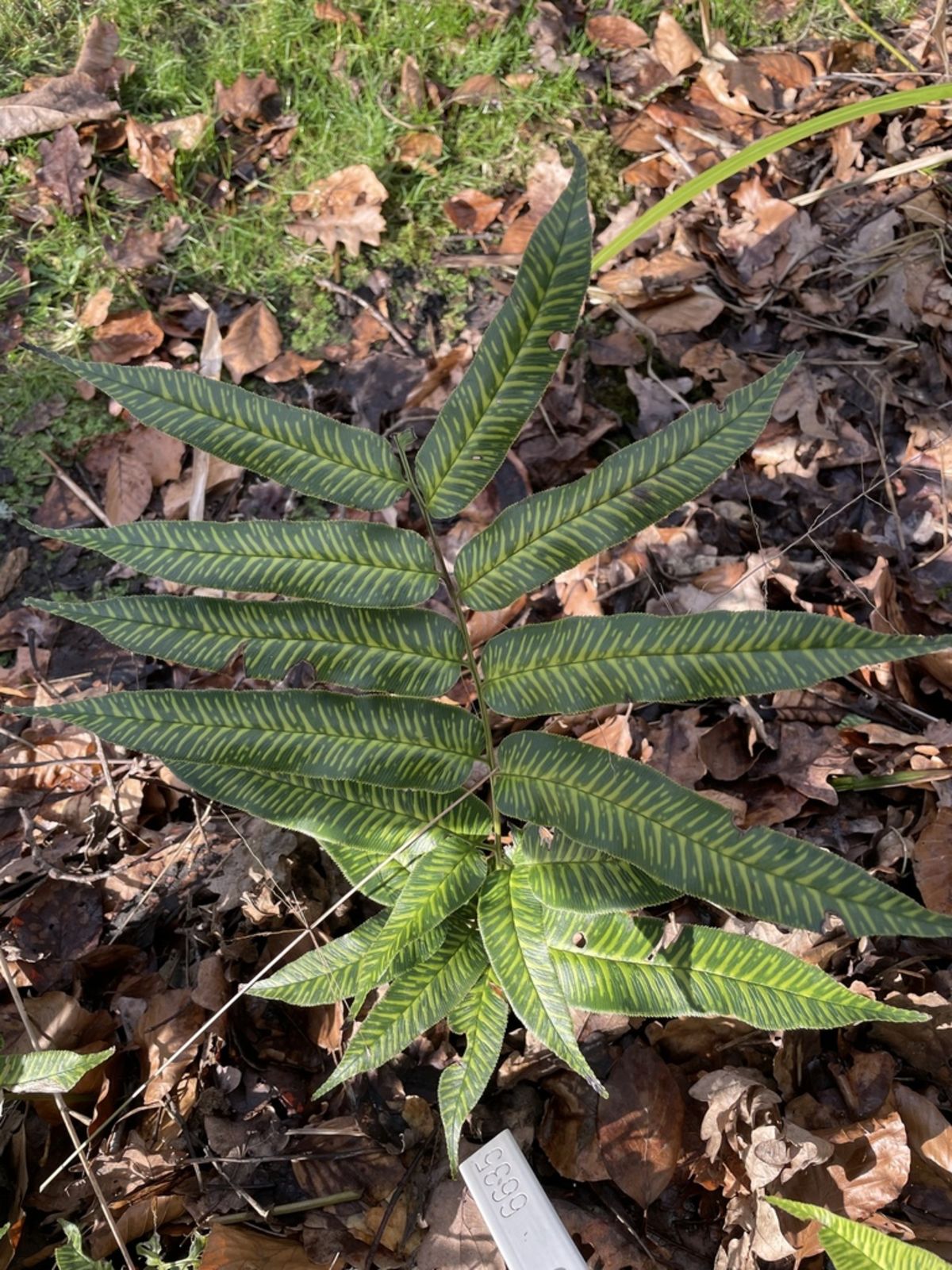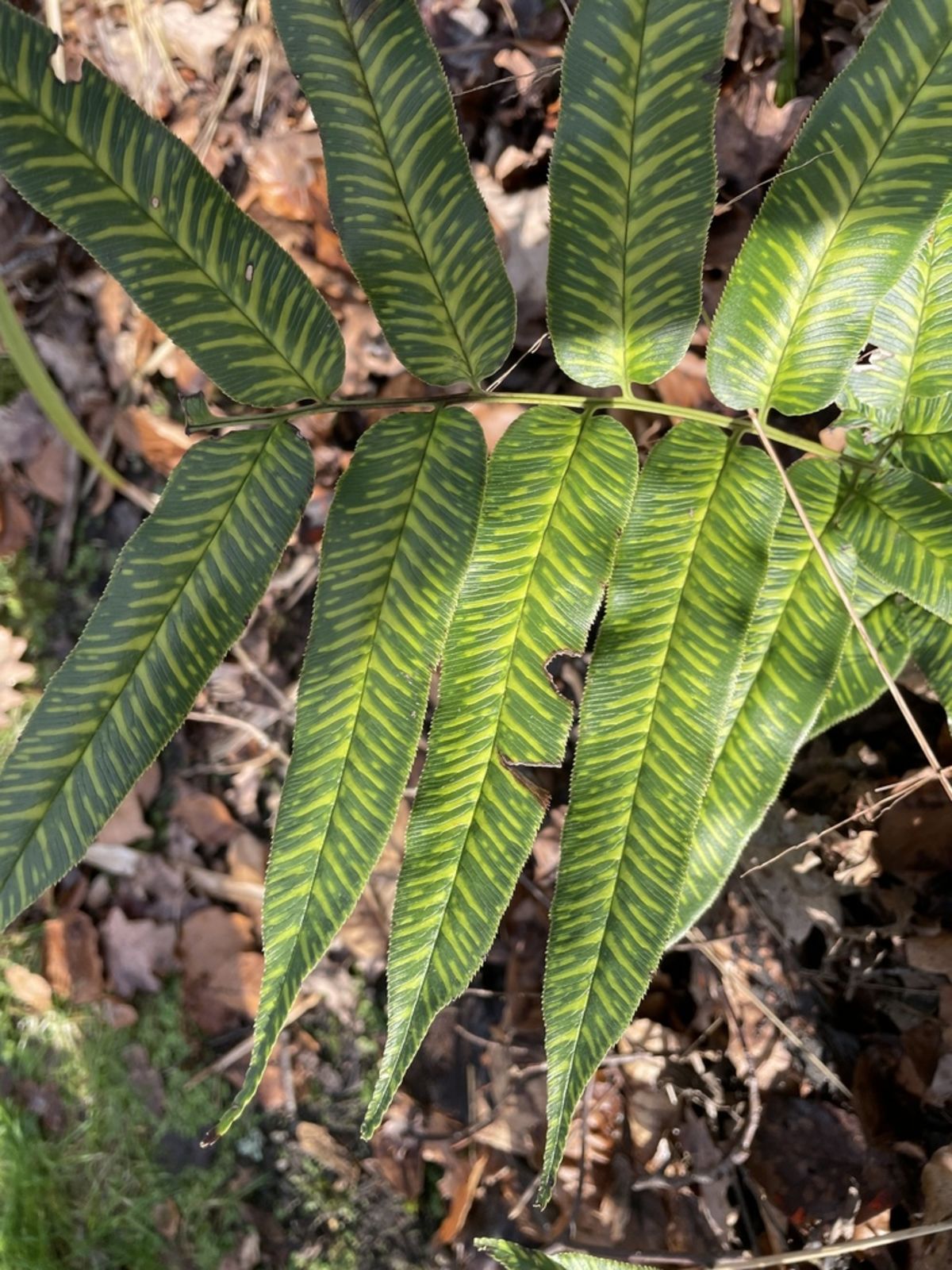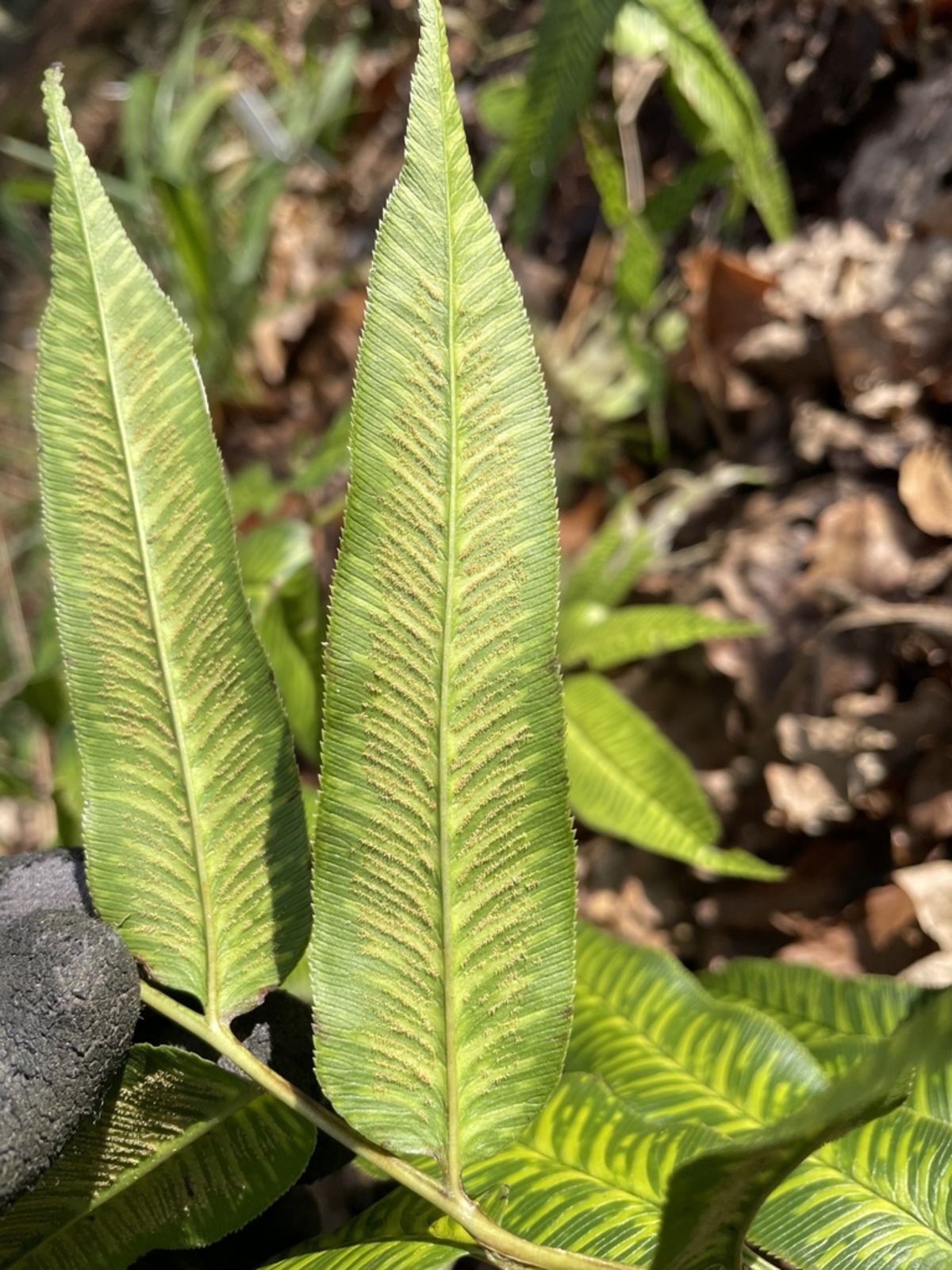Emei Mountain Fern
coniogramme emeiensis
Also known as: ["Emei Mountain Coniogramme"]
Overview
A terrestrial fern species native to the mountainous regions of China, characterized by its pinnate fronds and preference for shaded, moist environments.
Benefits & Perks
["shade tolerant","aesthetic foliage","wildlife attractant (bees, butterflies, birds)"]
Botanical Classification
| Phylum: | Tracheophyta |
| Class: | Polypodiopsida |
| Order: | Pteridales |
| Family: | Pteridaceae |
| Genus: | Coniogramme |
| Botanical Name: | Coniogramme emeiensis |
Plant Characteristics
Basic Information
- Category: Leaf Plants
- Suitable Location: shaded garden bed or container with dappled light
- Suitable For:
- Is Weed: No
- Allergenicity: low
Environmental Needs
- Climate: {"temperatureRange":"10–25°C"}
- Hardiness: {"zones":"8–10"}
- Misting: every 2–3 days in dry conditions
- Drainage: Fast-draining to prevent waterlogging.
- Soil Type: Well-draining potting mix with added organic matter; can include peat or coco coir.
Maintenance Level
- Maintenance Level: moderate
- Toughness Level: moderate
- Pruning Frequency: As needed, typically every 6–12 months or after flowering.
- Pruning Intensity: Moderate; remove up to one-third of growth if necessary.
Care Details
Ideal Sunlight Coverage:
Bright indirect light for 4–6 hours daily; tolerate partial shade, especially in hot climates.
Sunlight Tolerance Tips:
Acclimate gradually to intense light; protect from direct afternoon sun; adjust placement based on seasonal light changes.
Care Requirements
Care Difficulty
moderatemoderate
Sunlight
partial shade
Rotate plant for even growth; use sheer curtains to filter intense light; avoid direct sun exposure.
Watering
every 7–10 days during growing season, reduce in winter
Water deeply to encourage root growth; allow soil to dry between waterings; avoid overwatering.
Soil
well-drained, humus-rich soil
pH: Slightly acidic to neutral (pH 6.0–7.0).
Use a mix with good drainage; avoid heavy clay soils; ensure pH is within optimal range.
Temperature
Prefers 60–75°F (15–24°C); tolerates cooler temperatures but avoid frost.
Avoid sudden temperature changes; protect from drafts; maintain consistent room temperature.
Fertilizing
every 4–6 weeks during active growth
Fertilize only when actively growing; flush soil occasionally to prevent salt buildup; use organic options for gentle feeding.
Propagation
Methods
Stem cuttings or division; stem cuttings are more common for home growers.
Step-by-Step Propagation Guide
- Take a healthy cutting.
- Apply rooting hormone if desired.
- Plant in moist medium.
- Keep warm and humid.
Best Time: Spring or early summer when the plant is actively growing.
Environment
Warm, humid environment with indirect light; maintain consistent moisture.
Medium
Well-draining potting mix with perlite or sand; can also root in water initially.
Hormone
Rooting hormone can be used but is not strictly necessary.
Timeline
Roots may develop in 3–6 weeks; new growth may take 2–3 months.
Tools Needed
Pruning shears, rooting hormone, small pots, well-draining soil mix.
Quick Tips
Use healthy, non-flowering stems; maintain high humidity; avoid direct sunlight during rooting.
Pruning & Repotting
Pruning Guide
Method
Pinch back tips for bushier growth; cut just above a leaf node or bud.
Pruning Plan
Prune to maintain shape, remove dead/damaged growth, and encourage bushier growth.
Tools
Clean, sharp pruning shears or scissors.
Checklist
Sanitize tools; prune dead/damaged growth first; make clean cuts; dispose of clippings properly.
Repotting Guide
Best Season
Spring, before the active growing season begins.
Pot Size
Choose a pot 1–2 inches larger in diameter than the current one.
Method
Remove plant gently; trim any circling roots; place in a new pot with fresh soil; water lightly after repotting.
Suggestions
Repot every 2–3 years or when roots fill the pot; necessary to refresh soil and provide space.
Checklist
Select appropriate pot; prepare new soil mix; handle roots carefully; water after repotting.
Advanced Care Tips
Watering Mastery
Watering Checklist
Check soil moisture; water deeply; ensure proper drainage; adjust for season.
How to Apply Water Properly
Water at the base of the plant, ensuring even moisture distribution; water until it drains from the bottom; avoid wetting foliage to prevent fungal issues.
Watering Schedule Tips
Water thoroughly when the top 1–2 inches of soil are dry; reduce frequency in winter to prevent root rot.
Soil Improvement
Add perlite or sand for drainage; incorporate compost for fertility; ensure aeration with chunky ingredients.
Temperature Stress Management
Signs of Temperature Issues
Yellowing leaves (cold stress); wilting or leaf drop (heat stress).
Cold Stress
Slows growth; may cause leaf discoloration or dieback in prolonged cold.
Solution: Move to a warmer location; insulate roots with mulch; avoid cold drafts.
Hot Stress
Leaves may scorch or wilt; growth may slow under excessive heat.
Solution: Provide shade during peak heat; increase humidity; water more frequently if soil dries quickly.
Fertilizing Guide
Fertilizing Checklist
Check growth phase; dilute fertilizer correctly; apply to moist soil; stop in dormant season.
Fertilizing Method
Use balanced liquid fertilizer diluted to half strength every 4–6 weeks during growing season (spring/summer); avoid fertilizing in winter.
Common Problems & Solutions
Toxicity Warning
Cats
ToxicCats are susceptible to toxicity from Coniogramme emeiensis if ingested. The plant's toxic compounds can cause severe gastrointestinal upset and systemic effects, necessitating prompt veterinary care.
⚠️ Symptoms:
🌿 Toxic Parts:
⚡ Toxic If:
if eaten
Dogs
ToxicIngestion of Coniogramme emeiensis by dogs can lead to severe gastrointestinal and systemic toxicity. The plant's toxic compounds can cause significant distress and may require veterinary intervention.
⚠️ Symptoms:
🌿 Toxic Parts:
⚡ Toxic If:
if eaten
Humans
ToxicConiogramme emeiensis contains toxic compounds that can cause significant physiological distress upon ingestion. The plant's toxicity is due to the presence of potentially harmful substances that interfere with normal bodily functions.
⚠️ Symptoms:
🌿 Toxic Parts:
⚡ Toxic If:
if eaten
Frequently Asked Questions
Q: Is Coniogramme emeiensis toxic to pets?
A: No, it is non-toxic to dogs and cats.
Q: What are the ideal growing conditions for this fern?
A: It thrives in shaded, moist environments with well-drained soil and moderate humidity.
Q: Does this plant require frequent maintenance?
A: It has moderate maintenance needs, requiring regular watering and occasional pruning to remove dead fronds.
Quick Reference
| Family: | Pteridaceae |
| Care: | moderate |
| Light: | partial shade |
| Water: | every 7–10 days during growi |
Get Expert Care Tips
Download the Plantious app for personalized care reminders and plant identification!
Google Play App Store








